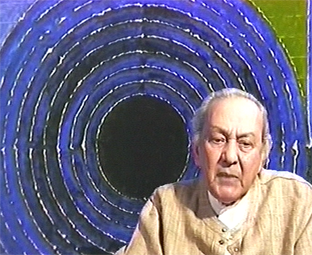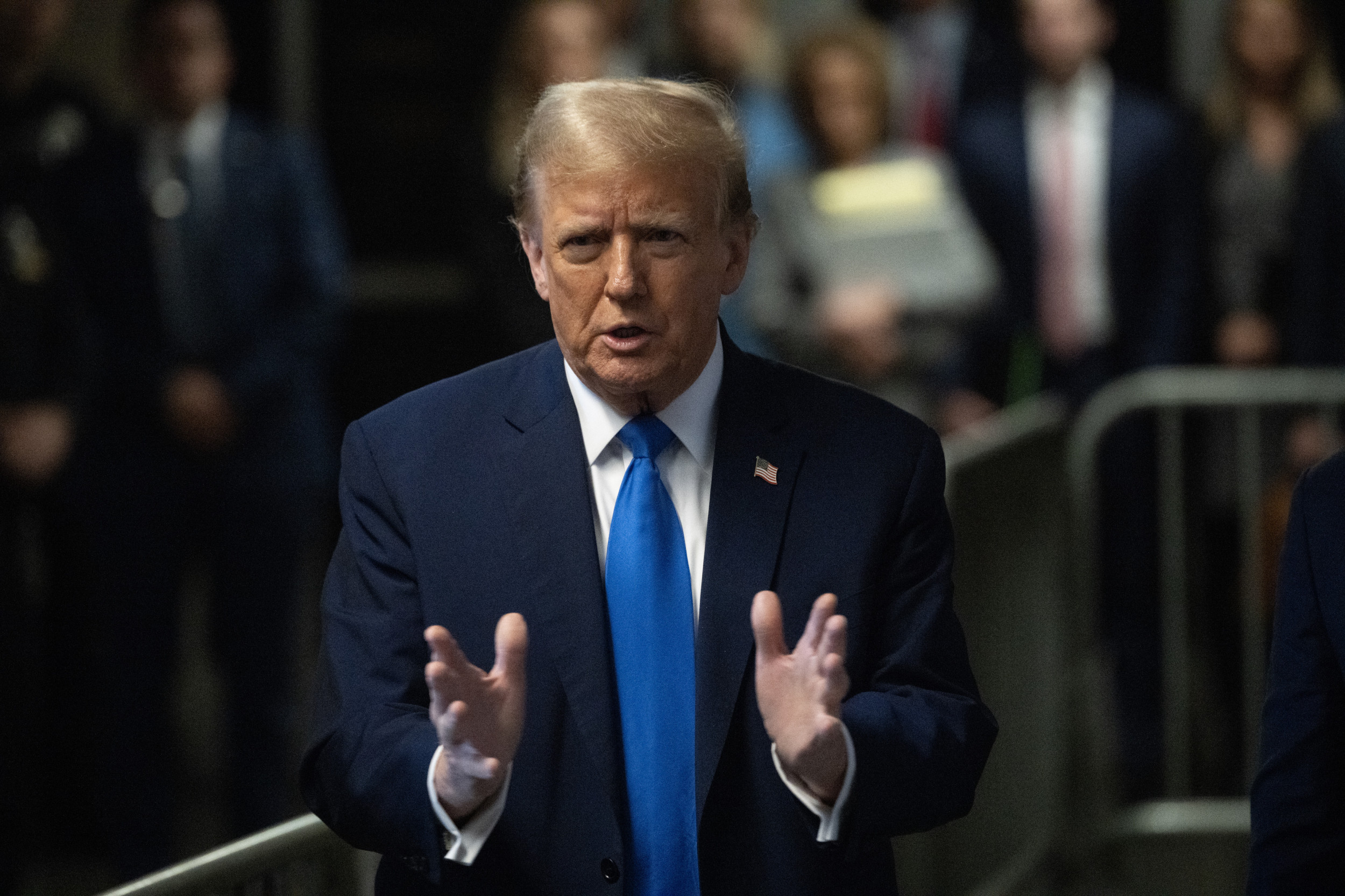
This article first appeared on the Riding the Elephant site.
India has lost one of its greatest modern painters with the death on July 23 of Syed Haider Raza, who was 94.
He was a leading member of the Bombay-based Progressive Artists' Group of the late 1940s and 1950s that now dominates the top end of the Indian art market, and his passing marks the gradual closing of a chapter in the country's post-independence art history.
Other famous members of the group—such as V.S. Gaitonde, F.N. Souza, Tyeb Mehta and M.F. Husain—have died in the past 15 years, most of them painting continuously till just before their deaths, as did Raza with his familiar canvas works of brightly colored squares, triangles and circles.
In June 2010, his massive 79-inch-by-79-inch acrylic on canvas Saurashtra, painted in 1983, hit a record price for Indian works at a Christie's London auction.
It was bought for $3.5 million by Kiran Nadar, a prominent collector, for her New Delhi museum. In 2014, Raza's La Terre reached $1.8 million at a Saffronart auction in Delhi.
He will be most remembered for his frequent use of the bindu, Sanskrit for dot or point, which represents cosmic power in Hindu tantric philosophy. It also leads to the name bindi, for the small mark worn by Hindu women on their foreheads.
He once said that, when he was 9, his teacher drew a bindu on a white wall and made him stare at it to check his restlessness. "The bindu awakened a latent energy inside me," Raza has said. "It is a source of energy, a still center and a point from which everything radiates."
His last exhibition, at Delhi's Vadehra gallery in January of this year, was astonishing because it consisted of more than 20 large acrylic-on-canvas works, and several smaller ones, all of which he had painted and were dated in 2015.
He came to the opening, frail and in a wheelchair, and I asked him whether he painted every day. "Yes, almost," he replied.
I arranged with his friend Ashok Vajpeyi to go to his studio and watch him at work, but he became ill and that sadly never happened. Two artist assistants helped him, I was told, as assistants and students have often done for leading artists down the centuries.
They drew the shapes that Raza wanted and held a palette for him to select the paints with a slightly wavering brush. Large canvases were raised and lowered so he could reach them. The works still had their appeal of dramatic colors, tying together in a theme, though with less sharpness than before.
"He has a particular ability to weave together a canvas with different chromatic sequences all clustered together without injuring each other," Krishen Khanna, 91, one of the few surviving Progressives told me, standing in the gallery alongside his old friend. "Look at the strong red which doesn't interfere with the rest of the work," he said, pointing to a particularly striking painting.
The two men wrote letters to each other from the 1950s that were published in 2013 by the Vadehra and the Raza Foundation.
"We couldn't just tear them up, it's bad to destroy such things," said Khanna. They tell of the struggles of their early years but are less frequent when the Progressives became standard-bearers in the auctions for the boom in Indian art that developed from the early 2000s.
"I feel very lonely now. One by one, they have all gone—[K.H.] Ara, Raza, Gaitonde, Tyeb," Khanna said. "Akbar Padamsee and Ram Kumar are the only others of our group who are now alive. Death has to happen in the course of the time, but it does not take away personal sorrow."
When the boom faded about eight years ago and works by India's more adventurous contemporary artists fell from popularity and peak prices, paintings by Raza and Progressive colleagues like Souza, Mehta and Gaitonde have continued to flourish. Their mostly figurative and abstract studies have continued to hit new records for the best works, though there have been some flops, and Raza in particular has sometimes been hit by fakes reaching galleries and auction houses.
When they started, the Progressives were important because they challenged India's artistic traditions while also recognizing and adopting art styles they saw in Europe and the U.S., where some, including Souza, went to live.
"We were not allowed to meet students because it was said we were a foreign influence," Husain told me in a 2009 interview. The critics "wanted us to paint like the Bengal school" instead of breaking from tradition into new styles.
Raza was born in 1922 in a remote rural village in Mandla district of Madhya Pradesh, in central India, near what is now Kanha National Park. His father was a forest ranger. After school, he studied art in Nagpur, the nearest large city, and then in Mumbai, where he had his first show when he was 24 at the Bombay Art Salon.
A 1948 meeting with the famous French photographer Henri Cartier-Bresson when he was 26 changed Raza's outlook toward art. He showed his paintings to Cartier-Bresson, who said the work lacked construction. "If I hadn't met Bresson, I would have continued painting white crosses to symbolize resurrection and black crosses for crucifixion," Raza had said in a 2006 interview with India Today, explaining how he switched to geometrical patterns.
He went to Paris in 1950 on a French government scholarship. There, artists such as Cezanne, Monet and Gauguin fascinated him.
He stayed in Europe for some 60 years, returning from Paris only in 2010, by which time he was the celebrity that India was eager to claim as its own—as has been demonstrated in the past day with tributes from top politicians and across social media.
John Elliott writes from New Delhi. His latest book is Implosion: India's Tryst With Reality (HarperCollins, India).
Uncommon Knowledge
Newsweek is committed to challenging conventional wisdom and finding connections in the search for common ground.
Newsweek is committed to challenging conventional wisdom and finding connections in the search for common ground.
About the writer
To read how Newsweek uses AI as a newsroom tool, Click here.








